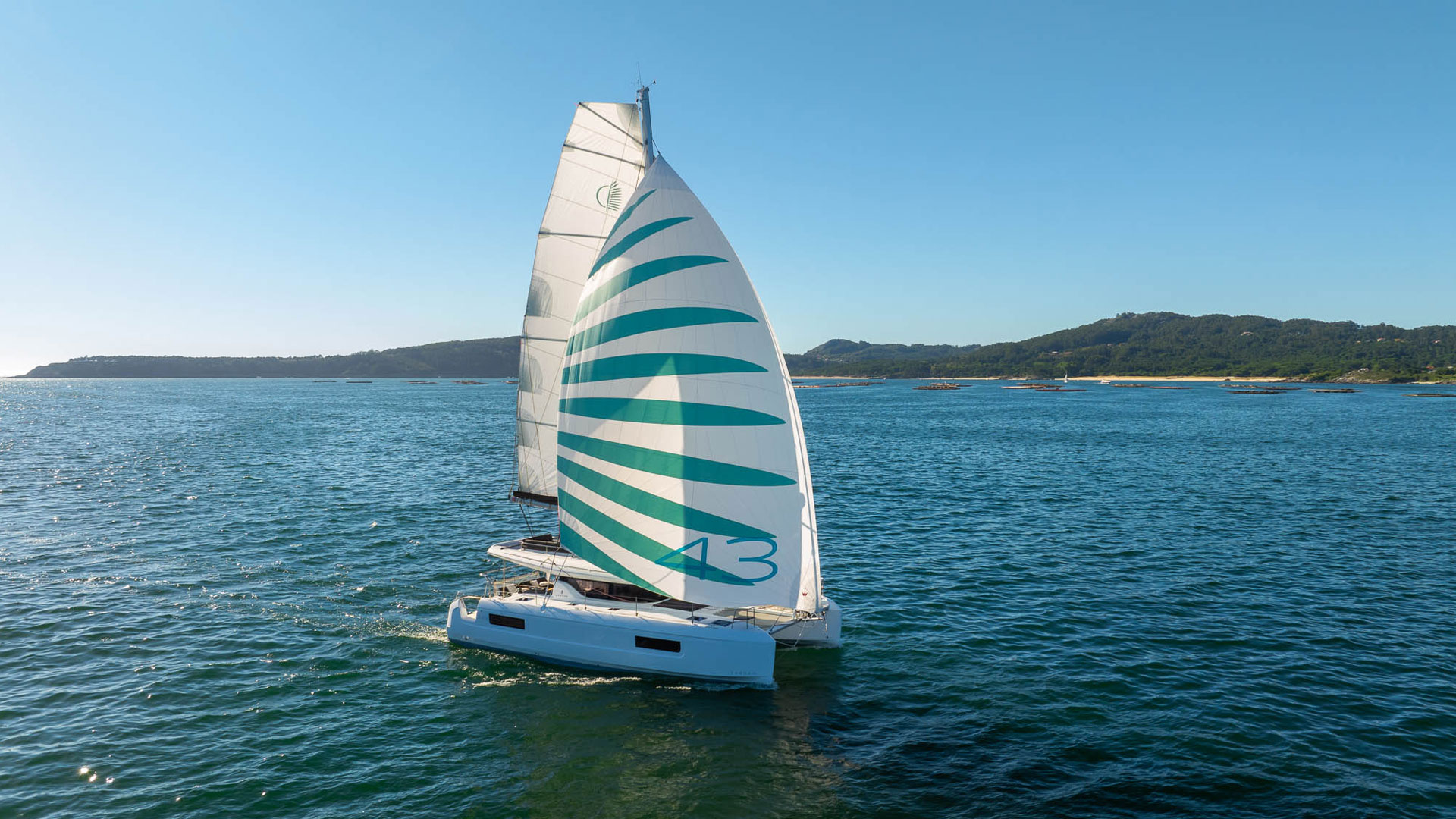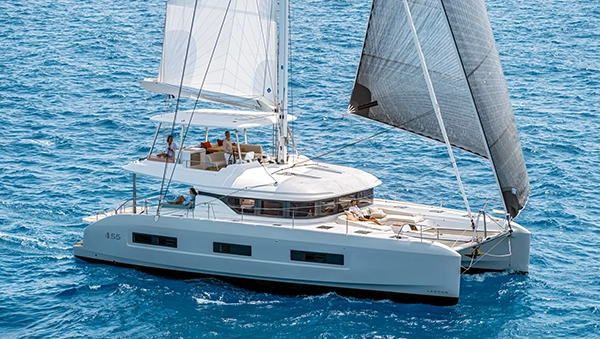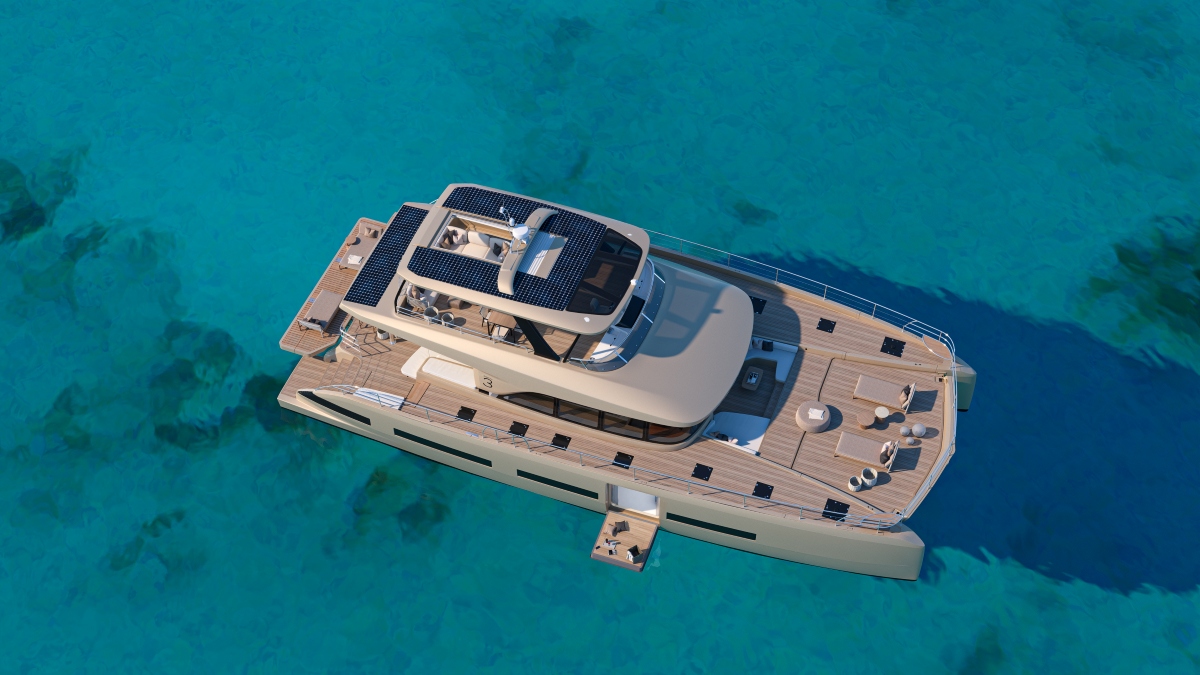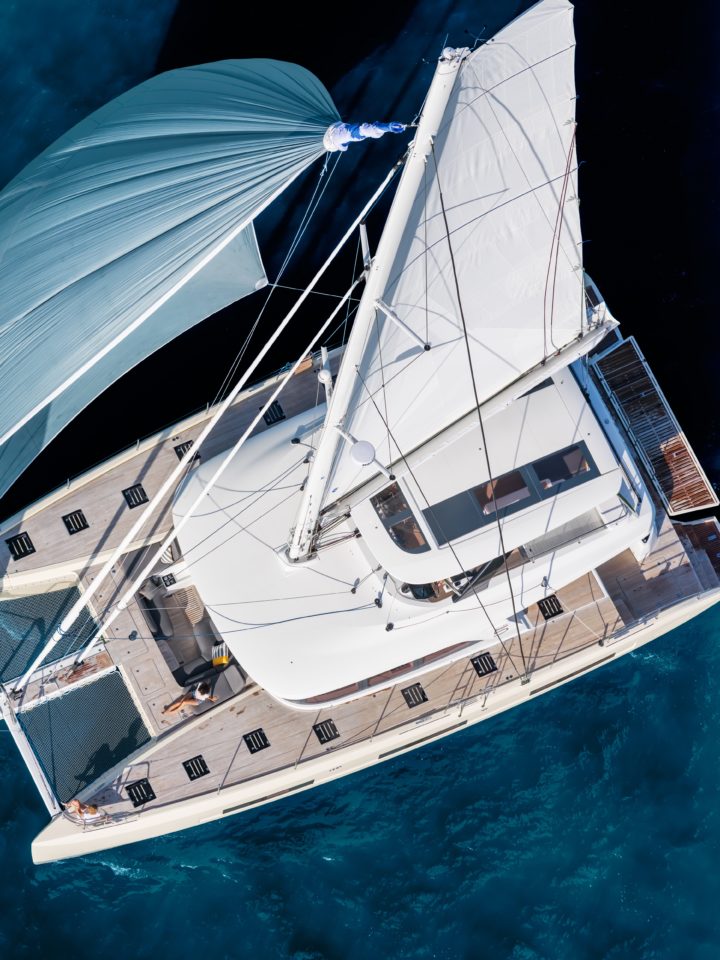If you’ve got more than 70-80 m² (750-850 sq ft) of sail area, using a sock for your spinnaker offers undeniable comfort and safety, so it would be wrong to deprive yourself of one, even if you have plenty of crew on board. This is all the more true as there’s no lack of space on a catamaran’s trampolines to handle one with ease.
Whatever the make of the spinnaker sock, the operation is always the same. Here are a few tips on how to make the most of this great bit of kit, developed single-handedly by non-other than the renowned French sailor, Eric Tabarly.
Preparation:
Don’t attempt to pack the spinnaker into the sock on board your boat. The best solution is to wait for a day with no wind, and then fully stretch the sail out along the pontoon. Fold the spinnaker lengthwise, pass a messenger line through the empty sock which you connect to the cringle at the head of the sail where you would attach the halyard, and gently slide the sail in before connecting the cringle and the top strap together.
Hoisting:
Clip the sheet, guy and halyard to all three corners of the sail as for normal hoisting. Lay the whole sock on the trampoline and check that there are no twists in the sock by checking along the length of the longitudinal stripe. Finally, check that the spinnaker sheet is slack forward of its winch, and preset the guy.
Contrary to the way a spinnaker is normally hoisted, the genoa should be furled before hoisting. On the other hand, you should stay on a broad reach, at about 150° off the wind to avoid the sock getting caught behind the spreaders.
While one crew member is hoisting at the mast, having put at least one turn on the winch, another controls the hoist and keeps hold of the line attached to the bridle on the underside of the collar.
















